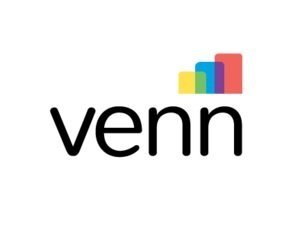In the anthology of business stories, there is no shortage of Davids who rose above the Goliaths victorious. We are all too familiar with the Davids-turned-Goliaths like Apple, Google and Amazon. We study them at length while millions of startups look to emulate them on their path to success. We don't however; spend a much time trying to understand the fall of the once-upon-a-time-Goliaths. Buzzkill? Maybe. But their stories are packed with valuable intel, lessons and mistakes that can teach all of us how to run better organizations.
So let’s settle in for a little story time, shall we?
Sears
The Amazon of its time, Sears was the largest retailer in North America in 1989. Beyond a fantastic retail experience, the one-time disruptor offered rural families access to products that they formerly had been excluded from via their catalogue business:
“The Sears (catalogue) had an even bigger impact in 1900 than Amazon has had today.” says Robert Gordon, professor at Northwestern University.
The arrival of the Sears catalogue was an anticipated experience. I personally remember my mother and her friends chatting on the phone about new items that had seen in the latest edition. I would wait with baited breath for the arrival of the Wish Book so that I could spend hours pouring over the endless options and circling my list for Santa.
Alas, the disruptor became the disrupted. Post-1989, very little changed at Sears, while the rest of the world was busy changing at an unforeseen pace. A few recessions, the dot-com boom, population flight into suburban areas and a little thing called the internet transformed the world outside while Sears continued to run operations in the way they did in 1989. Unfortunately, nostalgia was not enough to save them.
RadioShack
From its earliest inception and for most of its life, RadioShack had a clear value proposition. Simply put, hobbyists could count on RadioShack to be staffed by experts for advice, instruction and top-notch service. In these times, the average customer did not come to RadioShack to buy an entire stereo system. Instead, they came to purchase the items required to repair or upgrade their system and they did so often… many customers came weekly. Customers depended on this value proposition knowing that the staff at RadioShack could help them figure out how to solve their problem, upgrade their items, even hook up their VCR.
With the rise of giants like BestBuy and FutureShop however, the temptation was heavy on RadioShack leadership to follow suit. In the mid-nineties, RadioShack made a move to enter the big box retail space and become the opposite of the trusted value proposition that they had built. Ultimately, this move is often blamed for the fall of RadioShack.
AOL
Prior to their merger with Time Warner, AOL was THE dot com. However, their post-merger story is far from a fairy tale. There are various explanations out there for AOL’s fall but when you step back it appears that the merger combined with external factors created a perfect storm that AOL was not able to rise from.
Reports stated that the respective cultures of AOL and Time Warner mixed as well as oil and water. Imagine merging Google with a staid, corporate environment… not necessarily a natural recipe for success.
AOL had thrived during the years of dial-up however, as broadband began to become accessible to the average customer, AOL’s business model offered little value.
The icing on the AOL cake was the impending recession which saw AOL stock take a huge dive damaging their reputation and credibility in a permanent way. Without the agility to respond to market demands or a cohesive leadership team, AOL never reclaimed its former glory.
COMPETITIVE INTELLIGENCE AS A SOLUTION?
Hindsight being 20/20, it’s easy to look back at these stories and outline the missteps of these organizations. There is no guarantee that a systematic, competitive intelligence based process for decision-making would have saved these Goliaths.
Given the chance to go back and do it again, I wonder if competitive intelligence could have changed the game for them.
• Would RadioShack have walked away from their niche audience?
• Would AOL have retained more agility in their decision-making?
• Would Sears have foreseen the next evolution of the catalogue and become today’s Amazon?
We will never know what could have been for RadioShack, AOL and Sears but you can ensure that your company is using competitive intelligence to your advantage! To learn more about our upcoming workshop series, click here.

